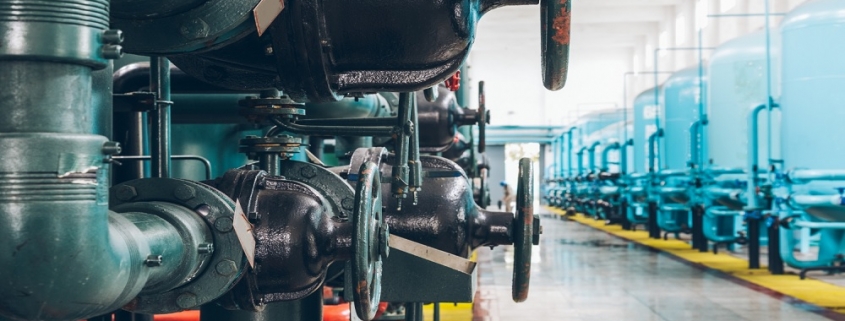Global Hydraulic Valve Market was valued at US$9.349 billion in 2021
A new analysis report on the global hydraulic valve market, which is forecasted between 2022 and 2028, has been published by Knowledge Sourcing Intelligence.
The prime factors propelling the market growth of the global hydraulic valve market are the innovations in hydraulic systems technology, increasing industrial automation, expanding construction and manufacturing sectors, rising demand for energy-efficient solutions, advancements in valve design for enhanced performance and durability, growing investment in infrastructure projects, stringent regulations promoting safety and environmental compliance.
As per the report, the global hydraulic valve market is expected to grow at a significant pace.
A hydraulic valve is a crucial component within hydraulic systems that regulates the flow and pressure of hydraulic fluid to control the movement and operation of machinery and equipment. By opening, closing, or adjusting passages, hydraulic valves manage the direction, speed, and force of fluid transmission, enabling precise and efficient control of various industrial processes, ranging from heavy machinery and construction equipment to manufacturing systems and aerospace applications.
The market is witnessing multiple collaborations and technological advancements, for instance in Feb 2023 HydraForce introduced its innovative electro-proportional boom lock valve, EHBL, at the CONEXPO-CON/AGG 2023 show as part of the International Fluid Power Exposition. The EHBL offers a compact and lightweight design, customizable for various boom lock valve requirements. Unlike traditional systems, EHBL focuses on pressure control rather than flow, incorporating features such as integral check protection and improved control.
Based on type the market is divided into pressure control valves, flow control valves, directional control valves, and others. Among these control valves categories, directional control valves are experiencing significant growth due to their crucial role in precise machinery operation. In industries such as manufacturing, construction, and automotive, the need for accurate and efficient control of hydraulic systems has fueled demand for directional control valves, enabling machinery to perform intricate tasks with enhanced accuracy and productivity. As pressure control valves maintain and control hydraulic pressure, flow control valves manage fluid flow rates, and directional control valves dictate the movement direction of actuators.
Based on materials the hydraulic valve market is divided into steel, iron, and others. Among these segments, the steel segment is witnessing substantial growth due to its superior properties that align with the demanding requirements of hydraulic systems. Steel hydraulic valves offer exceptional strength, durability, and resistance to high pressures and temperature fluctuations, making them ideal for heavy-duty applications in construction, industrial machinery, and oil and gas sectors. The robust nature of steel valves ensures reliable and consistent performance, contributing to their increased adoption and driving the growth of this segment in the hydraulic valve market.
Based on end users the market is divided into oil & gas, construction, transportation, agriculture, and others. Notably, the construction segment is experiencing significant growth due to the extensive utilization of hydraulic systems in heavy construction equipment, excavators, loaders, and cranes. The precise control and power transmission capabilities of hydraulic valves are essential for the intricate tasks and heavy lifting required in construction activities. As urbanization and infrastructure development continue to surge globally, the demand for efficient and reliable hydraulic systems in construction machinery drives the accelerated growth of this segment in the hydraulic valve market.
Based on Geography, Asia-Pacific is expected to dominate the global hydraulic valve market share. This is primarily attributed to the region’s robust industrialization, rapid urbanization, and significant growth in the manufacturing, construction, and automotive sectors. The increasing demand for advanced machinery, coupled with expanding infrastructure projects, drives the need for hydraulic systems, including valves, for efficient equipment operation. Moreover, the presence of key market players and technological advancements further contribute to Asia-Pacific’s dominance in the hydraulic valve market.
As a part of the report, the major players operating in the global hydraulic valve market, that have been covered are Bosch Rexroth Corporation, CBF Srl, Continental Hydraulics Inc., Daikin Industries Ltd., Eaton Corporation, ENERPAC, Quality Hydraulics, Valveworks, Youli Hydraulic Industrial Co., Ltd.
View a sample of the report or purchase the complete study at https://www.knowledge-sourcing.com/report/global-hydraulic-valve-market
These analytics report segments the global hydraulic valve market on the following basis:
- By Type
- Pressure Control Valves
- Flow Control Valves
- Directional Control Valves
- Others
- By Material
- Steel
- Iron
- Others
- By End User
- Oil & Gas
- Construction
- Transportation
- Agriculture
- Others
- By Geography
- North America
- USA
- Canada
- Mexico
- South America
- Brazil
- Argentina
- Others
- Europe
- UK
- Germany
- France
- Spain
- Others
- Middle East and Africa
- Saudi Arabia
- UAE
- Others
- Asia Pacific
- China
- Japan
- India
- South Korea
- Australia
- Other
- North America



